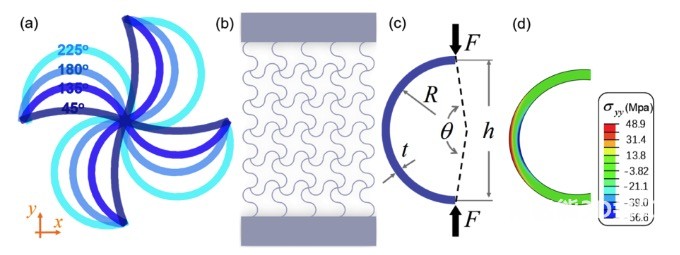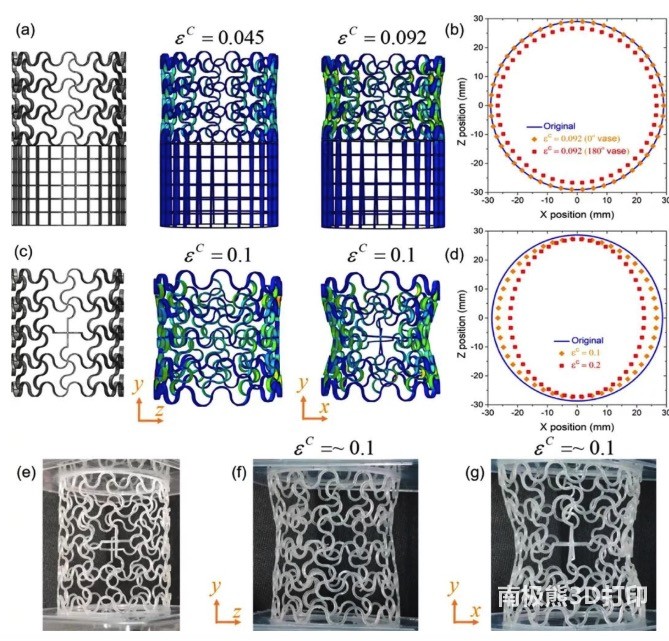Auxiliary SuperMaterials are a class of materials with negative Poisson’s ratio. The abnormal behavior of tensile-induced expansion makes auxetic metamaterials have excellent properties, such as super-large volume shrinkage, greatly increased energy absorption under indentation load, negative expansion behavior, negative thermal expansion, etc. Ming Lei et al. from Harbin Institute of Technology designed a novel auxetic metamaterial whose basic unit and mesh design are shown in Figure 1. Using the shape memory of the constituent materials, the metamaterial stiffness and Poisson’s ratio were achieved. Continuously adjustable.

Ming Lei et al. first explored the mechanical properties of meshes with different central angles through experiments. As the central angle increased, the meshes transitioned from tensile deformation to bending deformation, and the stiffness gradually decreased. Through experiments and finite element analysis, they found that the critical strain from the bending domain to the tensile domain increases with the increase of the central angle θ. At the same time, the Poisson’s ratio changes regularly with the change of the central angle, indicating that the Poisson’s ratio of the structure has a wide adjustable area.
Subsequently, the research team introduced the concept of programmability, using a PLA material with shape memory to make the meshes with different geometries by changing the tensile strain during programming. Elements with different curvatures are then arbitrarily combined to form a grid, which is called a digital pattern. This pattern will produce uneven deformation and cause in-plane pattern transformation or out-of-plane buckling. By combining the stretching phenomena of gradient digital patterns and rotationally symmetric digital patterns with shape memory, any desired deformed pattern can be programmed, erased and reprogrammed. Finally, based on the continuous change of curvature, the authors design two digital cylindrical shells. One is the two-segment cylindrical shell shown in (a) in Fig. 2. Due to the different auxetic behaviors of different θ, the cylindrical shell gradually becomes bamboo-shaped under compression, and the cylindrical shell follows rotational symmetry along the y-axis. The other is the digital cylindrical shell shown in Fig. 2(c), the cylinder becomes an elliptical cylinder and the cross-section becomes an ellipse under the compression condition.

The novel two-dimensional negative Poisson’s ratio metamaterial proposed in this paper has shape programmability that enables tunable mechanical properties of the fabricated metamaterial. The 2D meshes and 3D cylindrical shells proposed by Ming Lei et al. have the ability to reshape a simple geometry into irregularly shaped products, a technique that promises to simplify the heart
Blood vessel
Manufacturing process of stents, deployable structures, etc.
references:
Lei M, Hong W, Zhao Z, et al. 3D printing of auxetic metamaterials with digitally reprogrammable shape[J]. ACS applied materials & interfaces, 2019.
(responsible editor: admin)


0 Comments for “3D printing auxetic metamaterials with digitally reprogrammable shapes”